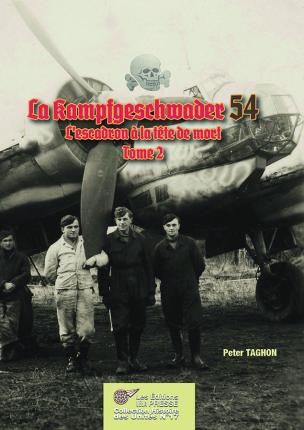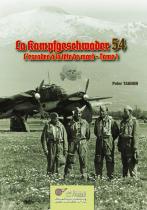Kampfgeschwader 54, the Totenkopfgeschwader, is a unit well known to fans of the air war of the Second World War given its skull and crossbones badge inherited from the hussar squadrons. But, above all, KG 54 distinguished itself as having been one of the few Luftwaffe squadrons that fought from the first to the last day of the conflict - even if it was in various forms and with often varying numbers.
Originating from KG 254, KG 54 began modestly with a single Gruppe engaged in September 1939 in Poland. In April 1940, its second Gruppe set up during the Phoney War took part in the fighting in Scandinavia. Then, the following month, the squadron, increased to three Gruppe, was launched into the Westfeldzug: the Great Campaign in the West.
Amputated from its third Gruppe disbanded after having suffered greatly throughout the engagements of May/June, KG 54 fought in the ‘Battle of Britain’, continuing its missions over England during the Night Blitz.
In June 1941, the two Gruppe called to the USSR during ‘Barbarossa’ fought vigorously, multiplying the missions but suffering such heavy losses that they were recalled to the Reich at the end of the year. The military situation had however become such that the Totenkopf was from this time forced to disperse its forces, I./KG 54 going to the Mediterranean while II./KG 54 returned to the USSR (while experiencing a brief stay in France). During the fighting on Malta, I./KG 54 operated jointly with K.Gr. 806, then renamed III./KG 54. These two Gruppe supported Marshal Rommel's Afrika Korps before being joined in 1943 in Sicily by II./KG 54, the squadron taking part in the last battles in Africa (Tunisia).
Now at full strength, the 54th squadron faced the Allied landings in Sicily before experiencing various withdrawals to continental Italy.
The Totenkopf definitively left the Mediterranean sector at the end of 1943 to return to the west. But this was to operate on England as part of the bloody operation 'Steinbock'. The losses there were so high that II./KG 54 was disbanded in April 1944. And, two months later, it was a squadron again reduced to two Gruppe that faced the Allied landings in Normandy in missions that were just as costly in terms of men and equipment.
Fighting tooth and nail, KG 54 returned to the Reich where, in September 1944, it became a fighter unit receiving the famous Me 262 jet aircraft. However, the aircraft still suffering from serious ‘teething diseases’, KG (J) 54 (although reinforced by a second Gruppe) was unable to distinguish itself against the vastly superior Allied air forces and was decimated. On 8 May 1945, the surviving personnel of the squadron with the death's head capitulated, its personnel being then mainly dispersed in Austria and Czechoslovakia. This Volume II includes 392 pages, more than 650 photos, 17 color profiles, and period documents. Volume I has been available since October 2024.









